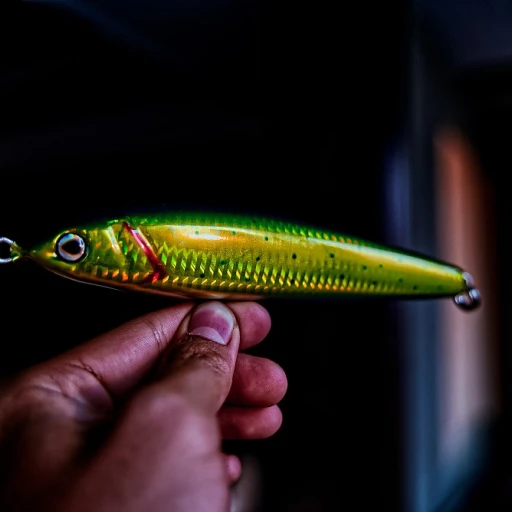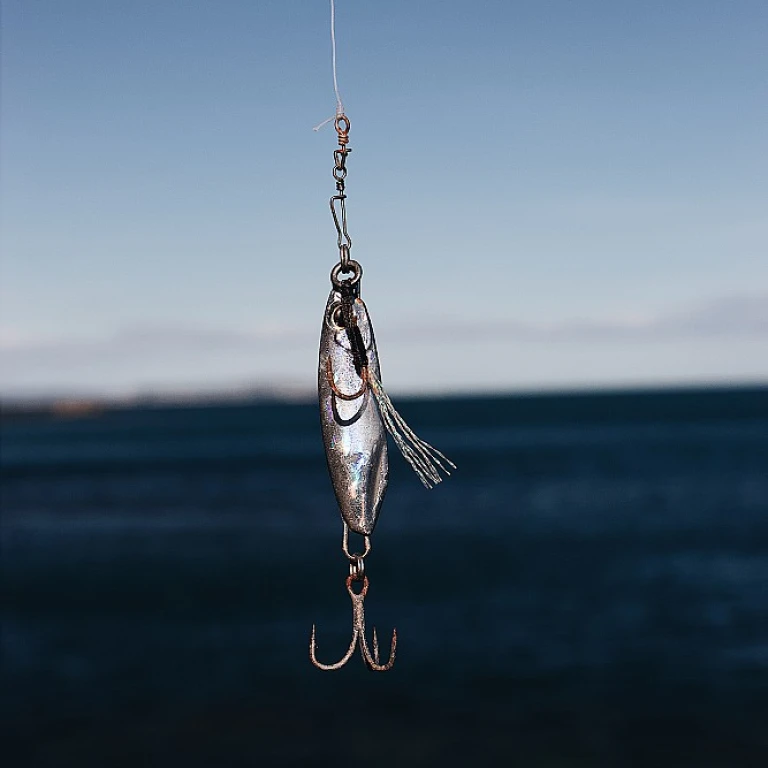The Majesty of the Tarpon
The Magnificent Silver King
The tarpon, often referred to as the "Silver King," stands as one of the most impressive fish that anglers can pursue. Known for its breathtaking size and incredible leaps, the tarpon encapsulates the essence of sport fishing. With its shimmering scales catching the sunlight, a mature tarpon can weigh anywhere between 60 to 280 pounds, stretching up to 8 feet in length. Each encounter with this oceanic giant is sure to etch a memorable experience in an angler's mind.
Regarded as one of the most challenging targets in recreational fishing, the tarpon's allure lies not just in its imposing stature but also in its tenacity. Each catch is a testament to an angler’s skill and perseverance, pushing the limits of their equipment and strategy. Unlike
the various types of tuna, whose appeal often lies in their speed and raw power, the tarpon mesmerizes with its aerial feats and relentless determination to break free.
The tarpon's majesty is best appreciated when observed in its natural habitat. While specific locales offer prime opportunities to hook a tarpon, it’s the experience itself that keeps anglers coming back. Whether you’re a seasoned professional or a curious novice, the pursuit of the tarpon promises not just a trophy fish, but a deep encounter with the wonders of the marine world.
Best Spots for Tarpon Fishing
Top Destinations for Tarpon Enthusiasts
Known as the "Silver King," the tarpon has captivated anglers with its impressive size and fight. For those eager to challenge themselves in the pursuit of these game fish, there are specific locations that stand out globally for their exceptional tarpon fishing opportunities.
The Florida Keys, often touted as the Mecca for tarpon fishing, hosts an annual migration that sees thousands of these mighty fish gather in its warm, azure waters. The sight of tarpons leaping acrobatically from the sea is an unforgettable spectacle, drawing anglers from across the globe.
Central America also boasts notable tarpon hotspots. Costa Rica, with its rich mix of saltwater and freshwater environments, offers a unique dynamic as these fish navigate between the two. The diversity of waters here fuels the energetic nature of tarpon fishing, making it a sought-after destination.
But it isn’t only about tropical seas. The crystal-clear waters off North Carolina have steadily gained popularity in recent years. Anglers relish the challenge of matching wits with tarpon that can grow in excess of 200 pounds.
For any fishing trip, understanding the natural habitats of potential catches can make or break the experience. Enthusiasts often pair their trips to these locations with other fishing adventures. If you’re planning a fishing trip, consider blending it with an adventure for other exquisite catches like the
big red snapper, which can provide a comprehensive angling adventure.
Exploring these premier locales will not only help in hooking a "monster tarpon," as they say, but also provide rich experiences interwoven with local cultures and stunning natural backdrops. Armed with essential gear and techniques, the journey becomes as alluring as the catch itself.
Essential Gear for Catching Big Tarpon
Gearing Up for the Challenge
If you've ever experienced the sheer excitement of hooking a tarpon, you know the importance of being properly equipped. As these formidable fish are known for their strength and size, having the right gear is key to turning your tarpon fishing adventure into a memorable success.
Start with a high-quality rod and reel combo designed to withstand the power of a sizable tarpon. A heavy-duty spinning rod, in around the 7 to 8-foot range with a fast action, usually works well. Pair it with a saltwater spinning reel capable of holding at least 300 yards of a 50-pound braided line. A match made in angling heaven, this combination offers the necessary leverage to manage the thrilling fight tarpon are famous for.
Equally crucial in your arsenal is the right terminal tackle. A strong fluorocarbon leader, typically between 60 to 80 pounds test, provides the abrasion resistance needed as the tarpon performs its acrobatic leaps and powerful runs. Additionally, be sure to use circle hooks, which are not only effective but also aid in ensuring a successful release by minimizing gut-hooking. For more detailed insights into preparing your tackle, consider mastering the
snell hook, an essential skill for any fishing enthusiast.
Accessories like fighting belts and polarized sunglasses can't be overlooked. A good fighting belt helps distribute the pressure of a lengthy battle, and polarized sunglasses are crucial for spotting the fish and protecting your eyes from the sun's glare.
In conjunction with the majestic experience tarpon provide, ensuring you have the right equipment will significantly heighten your enjoyment and increase your chances of success. Whether you're a seasoned angler or new to the thrill of chasing big tarpon, preparation is key to making the most of your fishing adventure.
Techniques for Landing a Large Tarpon
Strategies for Securing That Giant Catch
Once you've armed yourself with the essential gear, it's time to focus on the techniques that will maximize your chances of landing a large tarpon. Hooking a tarpon can feel like reeling in a freight train, so it's crucial to understand the tactics that experienced anglers swear by.
First and foremost, patience is your best ally. Tarpon are known for their acrobatic displays and fierce fights, which means rushing the process can often lead to disappointment. Allow the fish to run and jump, keeping a steady and even tension on the line. When the tarpon leaps, dip the rod tip to avoid breaking the line, a technique often referred to as "bowing to the king."
Positioning is another key factor. After hooking your target, maneuver your boat to maintain the best angle, keeping the tarpon on the surface and lowering the risk of wrapping the line around underwater obstacles. This approach decreases the fish's leverage and helps tire it out faster.
Finally, don't overlook the importance of your drag setting. A properly set drag allows the fish to run without breaking the line, especially when it makes a sudden rush. Make adjustments as the battle ensues, balancing between letting the tarpon tire itself and retaining control over the situation.
Remember, landing a giant tarpon requires skill and respect for the creature you're pursuing. Employing these techniques not only increases your chances of success but also ensures that this magnificent fish lives to thrill another angler another day.
The Record-Breaking Tarpons
Legendary Tarpons in the Record Books
Throughout the years, tarpon have cemented their status as one of the most sought-after game fish for anglers worldwide. With their sheer size and incredible fighting prowess, it's no surprise that the world record book has numerous stories of exceptional catches. These awe-inspiring tarpon, often referred to as "silver kings," captivate fishermen and spark dreams of landing a personal best.
The largest recorded tarpon, snagged off the shores of Sierra Leone, Africa, weighed an astounding 286 pounds. This behemoth has held the title for many years and continues to be a benchmark for dedicated anglers. Fishing enthusiasts pursuing tarpon across prime locations like Florida, Puerto Rico, and Central America might not always compete with such record holders, but landing a tarpon in the 100-pound range is still an admirable feat.
While the weights of these giants are impressive, the thrill of witnessing a tarpon leap acrobatically into the air against a backdrop of azure waters is unmatched. Such encounters leave indelible memories and inspire future anglers to join the wave of tarpon chasers. For those ready to test their skills and break personal records, mastering the right techniques and having the appropriate gear are crucial to your tarpon fishing success – as outlined in previous sections of our guide.
Whether you're a seasoned angler or a newcomer, the dream of catching a record-breaking tarpon is the ultimate challenge, promising excitement and a deep appreciation for the majesty of these incredible fish.
Conservation and Catch-and-Release Practices
Protecting the Giants: Conservation and Catch-and-Release Practices
The stunning majesty and the challenging pursuit of the giant tarpon captivate anglers globally, but preserving this remarkable species for future generations is equally paramount. As enthusiasts talk about landing the monster tarpon, it becomes crucial to understand the sustainable fishing practices that ensure these remarkable fish continue to thrive in their natural habitats.
Catch-and-release has increasingly become the standard in tarpon fishing, given that they are not typically harvested for consumption. The proper methods of catch-and-release are essential to minimize stress and injury to the fish. Once a tarpon is hooked, bringing it in quickly for a release is key. Prolonged battles exhaust the fish, reducing its chances of survival upon release.
When handling tarpon, use wet hands or gloves to protect their delicate slime coating. Supporting the fish horizontally with one hand on the lower jaw and the other under the belly reduces harm significantly. Remember to keep the fish in the water as much as possible and limit the time out of the water for photos.
Educating oneself about current regulations and respecting seasonal closures contributes further to the species' conservation. Authorities often impose these measures to protect tarpon during their critical spawning periods, which are vital for maintaining healthy populations.
Finally, spreading awareness among fellow anglers about sustainable fishing practices is as important as the act itself. Sharing the thrill of a fight with big tarpon also means sharing the responsibility of ensuring these giants roam the oceans for years to come, preserving the legacy and thrill of tarpon fishing for future generations.

